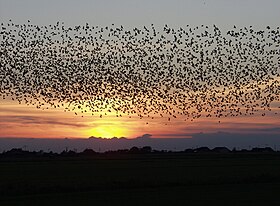List of Gaviiformes by population
| The population of birds |
|---|
 |
| Lists Accipitriformes (hawks, eagles, vultures, and kites) Anseriformes (waterfowl) Apodiformes (swifts and hummingbirds) Caprimulgiformes (nightjars and relatives) Charadriiformes (gulls and relatives) Ciconiiformes (storks and relatives) Columbiformes (doves and pigeons) Coraciiformes (kingfishers and relatives) Cuculiformes (cuckoos and relatives) Falconiformes (falcons and relatives) Galliformes (gamebirds) Gaviiformes (loons or divers) Gruiformes (cranes and relatives) Passeriformes (perching birds) Pelecaniformes (pelicans and relatives) Phoenicopteriformes (flamingos) Piciformes (woodpeckers and relatives) Podicipediformes (grebes) Procellariiformes (albatrosses and petrels) Psittaciformes (parrots) Sphenisciformes (penguins) Strigiformes (owls) Struthioniformes (ratites) Tinamiformes (tinamous) Trogoniformes (trogons and quetzals) |
| Key  Conservation status Critically endangered (CR) Endangered (EN) Vulnerable (VU) Near threatened (NT) Least concern (LC) Data deficient (DD) |
|
This is a list of Gaviiformes species by global population. While numbers are estimates, they have been made by the experts in their fields. For more information on how these estimates were ascertained, see Wikipedia's articles on population biology and population ecology.
All Gaviiformes have been quantified.
Species by global population
| Common name | Binomial name | Population | Status | Trend | Image |
|---|---|---|---|---|---|
| Yellow-billed loon | Gavia adamsii | 16,000–32,000[1] | Near threatened[1] |  [1] [1] |  |
| Red-throated loon | Gavia stellata | 200,000–600,000[2] | Least concern[2] |  [2] [2] |  |
| Black-throated Loon (Arctic Loon) | Gavia arctica | 275,000–1,500,000[3] | Least concern[3] |  [3] [3] |  | | |
| Pacific loon | Gavia pacifica | 930,000–1,600,000[4] | Least concern[4] |  [4] [4] |  | | |
| Common Loon | Gavia immer | 612,000-640,000[5] | Least concern[5] |  [5] [5] |  |
See also
References
- ^ a b c BirdLife International (2016). "Gavia adamsii". IUCN Red List of Threatened Species. IUCN. Retrieved 2017-04-29.
- ^ a b c BirdLife International (2016). "Gavia stellata". IUCN Red List of Threatened Species. IUCN. Retrieved 2017-04-29.
- ^ a b c BirdLife International (2016). "Gavia arctica". IUCN Red List of Threatened Species. IUCN. Retrieved 2017-04-29.
- ^ a b c BirdLife International (2016). "Gavia pacifica". IUCN Red List of Threatened Species. IUCN. Retrieved 2017-04-29.
- ^ a b c BirdLife International (2016). "Gavia immer". IUCN Red List of Threatened Species. IUCN. Retrieved 2017-04-29.













